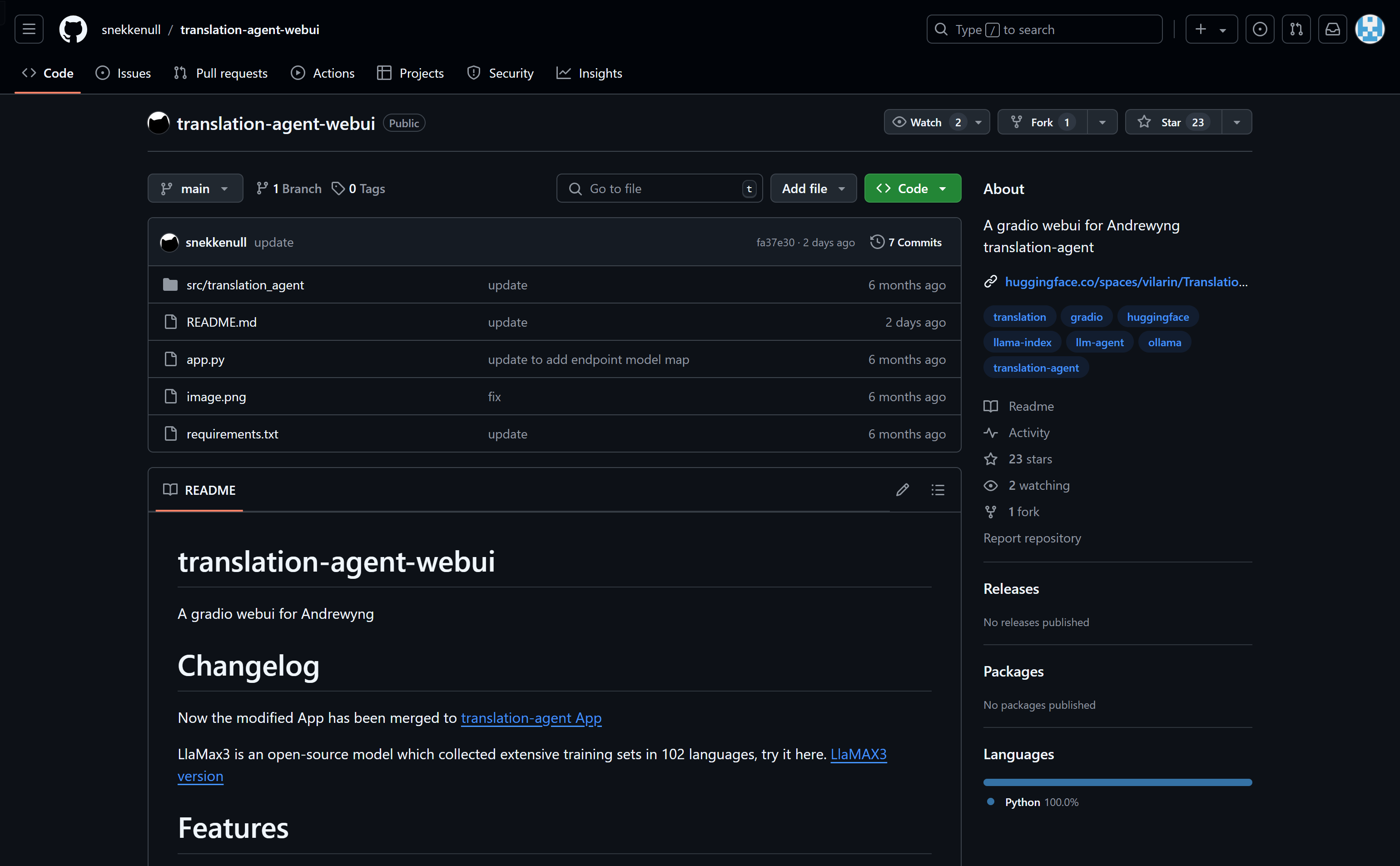

Translation Agent WebUI
Overview :
The translation-agent-webui is a Gradio-based web interface for the Andrewyng translation agent. It supports automatic detection of the input text's language, tokenization of text words, highlighting of translation differences, and various AI translation APIs, including groq, openai, cohere, ollama, together AI, and Huggingface Inference API. The main advantages of this tool are its user-friendly interface and support for multiple languages, making translation tasks more convenient and efficient. The product background information shows that this tool is built on the open-source model LlaMax3, which has a comprehensive training dataset across 102 languages.
Target Users :
The target audience includes individuals and teams requiring multilingual translation, such as translators, employees of multinational companies, and language learners. This tool is suitable for them as it provides an intuitive interface for quick language detection and translation, supporting various translation APIs, allowing users to select the appropriate translation service as needed.
Use Cases
Multinational companies use this tool for internal document multilingual translations, enhancing work efficiency.
Language learners utilize this tool to translate and understand foreign language articles, deepening their learning experience.
Developers leverage the tool's API interface to integrate it into their own multilingual support projects.
Features
Automatic detection of input text language
Tokenization of text words
Highlighting translation differences
Support for various AI translation APIs, including groq, openai, cohere, ollama, together AI, and Huggingface Inference API
Support for Huggingface Inference API, allowing direct input of model ID for translation
Preview feature to display translated results
How to Use
1. Visit https://github.com/snekkenull/translation-agent-webui to learn about the project's basic information and documentation.
2. Follow the instructions in the README.md file to deploy or use the web interface.
3. Input the text that needs translation in the web interface.
4. Choose the target language and translation API (if multiple options are available).
5. Click the translate button and wait for the results.
6. Review the translation results and use the highlighted differences feature for proofreading.
7. If needed, adjust the translation parameters or switch translation APIs for better translation results.
Featured AI Tools

Pseudoeditor
PseudoEditor is a free online pseudocode editor. It features syntax highlighting and auto-completion, making it easier for you to write pseudocode. You can also use our pseudocode compiler feature to test your code. No download is required, start using it immediately.
Development & Tools
3.8M

Coze
Coze is a next-generation AI chatbot building platform that enables the rapid creation, debugging, and optimization of AI chatbot applications. Users can quickly build bots without writing code and deploy them across multiple platforms. Coze also offers a rich set of plugins that can extend the capabilities of bots, allowing them to interact with data, turn ideas into bot skills, equip bots with long-term memory, and enable bots to initiate conversations.
Development & Tools
3.8M

















